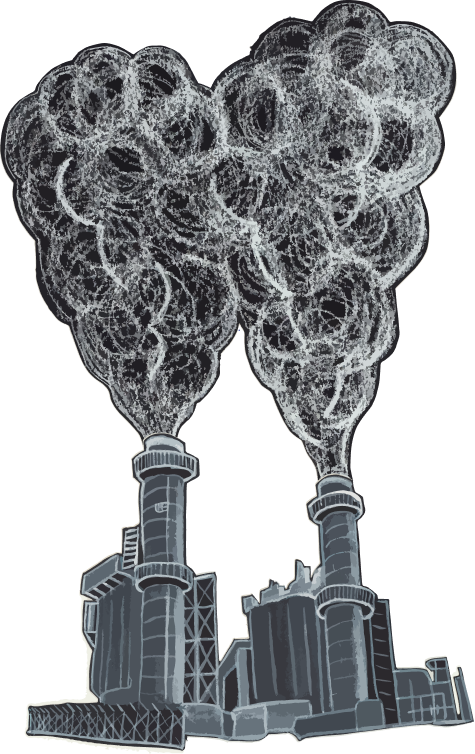Alabama
Back to mapTo get to zero by 2050, Alabama must cut climate pollution by
4.9 million metric tons of CO2 equivalent a year.
Emissions in Alabama
Million metric tons of carbon dioxide equivalent (MMTCO2e) emissions
Note: Grey area indicates missing data due to processing delays.
Source: WRI, Mar 2021
This is how we're going to do it.
Source: WRI, Mar 2021
- Boilers and furnaces with heat pumps
- Gas stoves with induction ranges
- No-till farming to keep CO2 in the soil
- Capturing methane leaks from landfills
- Capturing CO2 to make emissions-free concrete
- Burning green hydrogen to make emissions-free steel
- Plugging methane leaks from gas pipelines
Decarbonize Our Buildings
3% of Alabama's climate pollution comes from buildings.
We burn fossil fuels to heat our air, water, and food.
To cut this pollution...
Let's electrify our heat!
We'll replace...
...in all of Alabama's 2.5 million buildings.
In fact, 61% of buildings in Alabama are already fossil fuel free!
That means we only need to electrify the remaining 968,000 dirty buildings in Alabama. That's around 35,000 per year.
Source: Microsoft, Mar 2021; NREL, Dec 2021Electrifying all buildings cuts 3% of the pollution.
Decarbonize Our Transport
24% of Alabama's pollution comes from cars, trucks, trains, and planes.
But mostly from cars.
To cut this pollution,
your next car must be electric.
Or consider going car-free with public transit, bikes/e-bikes, car share, or other alternatives!
There are 2.0 million vehicles in Alabama and 3,000 are already electric (0.1% of the total).
We need to electrify (or replace) the remaining 2.0 million gas-powered vehicles. That's around 73,000 a year.
Source: DOT, Feb 2021Electrifying all transportation cuts 24% of the pollution.
Decarbonize Our Power
38% of Alabama's pollution comes from burning coal, gas, and oil to make power.

To cut this pollution...
Put solar panels on your roof!
Then, we'll replace all fossil fuel power plants with solar and wind farms.

...and find good jobs for those workers.
Current Fossil Fuel Power Plants in Alabama
5 coal plants
Barry
Mobile County
2,842 MW
James H Miller Jr
Jefferson County
2,822 MW
E C Gaston
Shelby County
2,034 MW
Gorgas
Walker County
1,417 MW
Charles R Lowman
Washington County
1,265 MW
25 gas plants
Plant H. Allen Franklin
Lee County
2,684 MW
E B Harris Generating Plant
Autauga County
2,534 MW
Colbert
Colbert County
1,826 MW
Greene County
Greene County
1,288 MW
1 oil plant
Crestwood Dothan
Houston County
14 MW
But wait!
It's not enough to replace our power plants with wind and solar farms.
To power our electric cars and buildings, we need two times the electricity we have today.
In all, we'll need to build 7,000 Megawatts of wind power and 8,000 Megawatts of solar power.
Since Alabama already has 0 Megawatts of wind and 58 Megawatts of solar, that's 8,000 Megawatts of wind power we need to build and 8,000 Megawatts of solar power. That's around 237 Megawatts of wind power and 287 Megawatts of solar power a year.
Source: EIA, Apr 2022Decarbonizing all dirty power cuts 38% of the pollution.
And gives us zero-emissions power we need to eliminate pollution from buildings and cars!
Other Emissions
The last 34% of Alabama's climate pollution comes from other sources...
This includes farming, landfills, industry, and leaks from gas pipelines.
There's no one solution to solve these problems, but there are lots of great ideas:
Ready to do your part?
Learn how to electrify your own machines and pass local policy to electrify the rest
Take Action